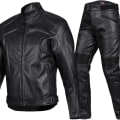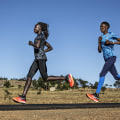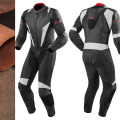When it comes to choosing a race suit, there are a few key factors to consider. The ideal racing suit should come with the necessary certifications, be lightweight, and offer a good fit and a high level of protection. To ensure you get the right size, it's important to take accurate measurements and use a soft measuring tape. Elastic panels are also important for getting in and out of a racing car, having a full range of motion, and sitting for long periods of time in racing seats.
It's also important to consider the SFI ratings when selecting the right safety equipment for your racing program. The right racing suit and safety accessories will not only keep you protected, but they will also help you run with confidence. Originally, racing suits were made with a single layer of protective material, but due to technological advances and updated safety requirements, 2- and 3-layer suits have become the current standard. When it comes to choosing between a one-piece or two-piece suit, the debate can involve the decision-making process based on sanctioning body or track regulations. However, most runners simply like the added value of the TPP and the extraction time instead of the single-layer SFI1 racing suit.
The two-piece suit is popular with oval track runners or those going on endurance races because you can simply open the zipper and take off your jacket while working on your car or waiting to be called to the surface of the track for your next race. In general, lighter racing suits are easier to move, are more comfortable and help the driver save energy during the race. Choosing the right size of a racing suit isn't as easy as choosing a shirt from the shelf. Like a well-tailored business suit, the fit of your racing suit will depend on the accurate and honest measurement of key points on the body. We strongly recommend that everyone who wants to order a racing suit take these steps seriously, including knowing how to measure themselves correctly and what measurements you will need.
The best thing to do is to use a rope that can be measured after marking it, although we strongly recommend that you buy a “soft” measuring tape, such as the one used by seamstresses. You can find them at fabric and craft stores or online. If a measurement is at the top of a size, it's recommended to move to the next size to ensure you have enough space. Unless you're wearing a custom racing suit, you'll have to accept that some areas of the suit may be slightly oversized. The most important measurement when wearing a racing suit is height.
While our racing suits have the ability to stretch horizontally, their vertical stretch is limited by the front zipper. You can also learn all about how to measure your racing suit in this detailed guide.






